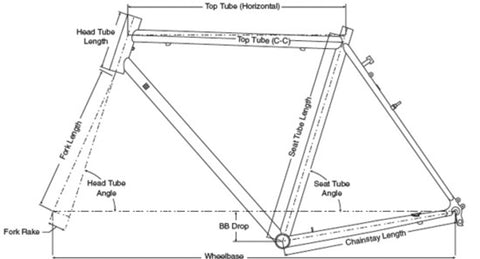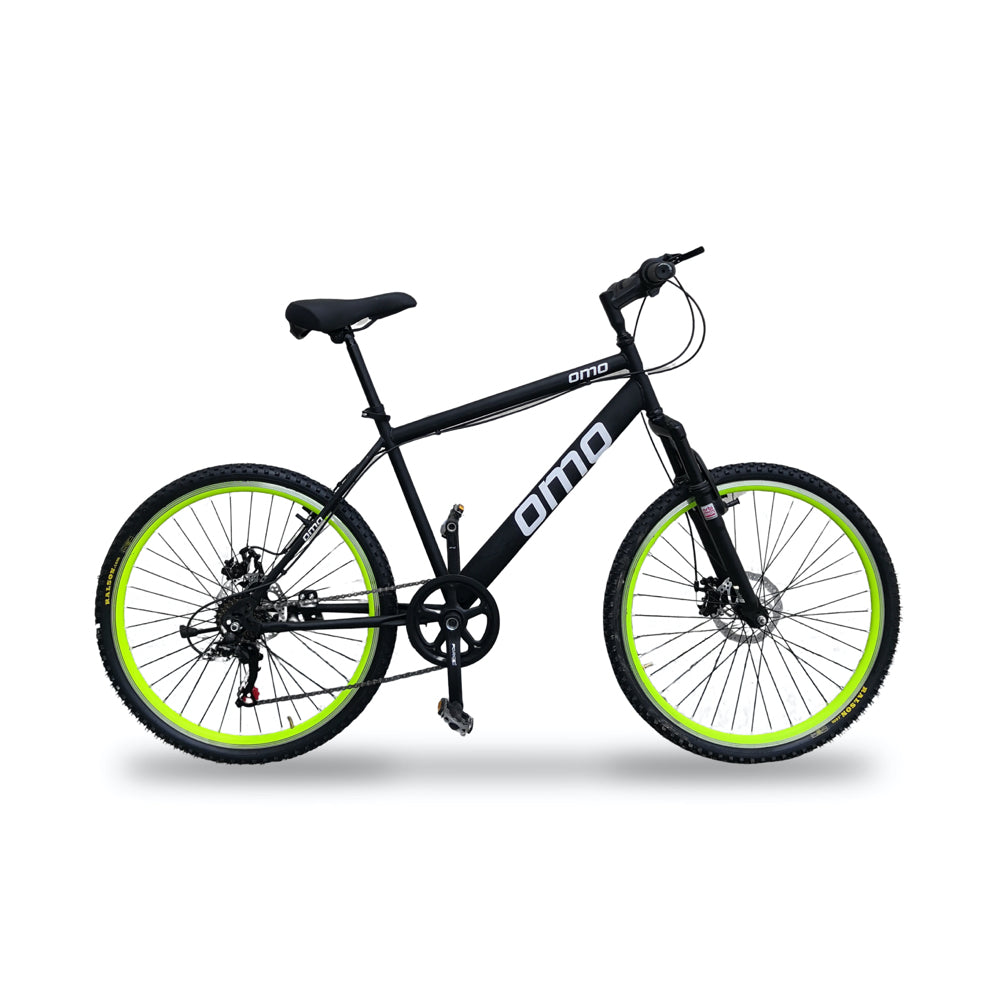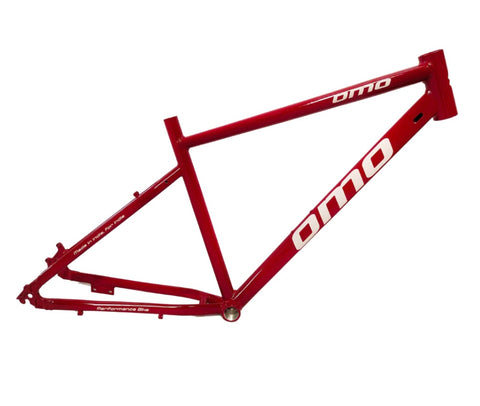A Complete Guide about Bicycle Frames
OMO BikesShare
Why The knowledge of the Frame is Important as Bicycle Rider?
As a bike rider, it is very simple to understand the problem of the cycle-user and fix their Hybrid or MTB Bicycle. But what would you do if someone shares their issue on-call or they will give you the exact information about the frame defects? So, in that case, you must know the name of the part of the frame to make the job easy.
High Quality Alloy Bicycle frame and Fork on Omobikes
What is a Bicycle Frame?
A Bicycle frame is the main component of a bicycle, onto which wheels and other components are fitted. The modern and most common frame design for an upright bicycle is based on the safety Bicycle and consists of two triangles: the main triangle and a paired rear triangle. This is known as the diamond frame. Frames are required to be strong, stiff, and light, which they do by combining different materials and shapes.
What is a Bicycle Frameset?
A frameset consists of the frame and fork of a Bicycle and sometimes includes the headset and seat post. Frame builders will often produce the frame and fork together as a paired set.
What are the Types of Bicycle Frame?
There are several variants and types of frames all over the world but in India, one of the most popular types is the "Diamond Frame" and not only in India but it's one of the most common frame variants used all over the world.
DIAMOND FRAME
Besides the ubiquitous diamond frame, many different frame types have been developed for the bicycle, several of which are still in common use today.
- STEP-THROUGH
- CANTILEVER
- RECUMBENT
- PRONE
- FOLDING
- TANDEM
- PENNY-FARTHING
This is the important part where we start with the basics of every frame which is made by tubes and there are various processes to make them as per the type and requirements of the frame. As I said in the very beginning, the Diamond frame is one of the most popular variants. So, let's take the example of the Diamond frame.
The diamond frame consists of two triangles, the main triangle, and a paired rear triangle. The main triangle consists of the head tube, top tube, down tube, and seat tube. The rear triangle consists of the seat tube, paired chain stays and seat stays.
HEADTUBE:
The head tube contains the headset and the bearings for the fork via its steerer tube. In an integrated headset, cartridge bearings interface directly with the surface on the inside of the head tube, on non-integrated headsets, the bearings (in a cartridge or not) interface with "cups" pressed into the head tube.
TOP TUBE:
In a traditional-geometry diamond frame, the top tube is horizontal (parallel to the ground). In a compact-geometric frame, the top tube is normally sloped downward toward the seat tube for additional stand-over clearance. In a mountain bike frame, the top tube is almost always sloped downward toward the seat tube. Radically sloped top tubes that compromise the integrity of the traditional diamond frame may require additional gusseting tubes, alternative frame construction, or different materials for equivalent strength.

DOWN TUBE:
The down tube connects the head tube to the bottom bracket shell. In racing bicycles and some mountain and hybrid bikes, the derailleur cables run along the down tube, or inside the down tube. Older racing bicycles have the shift levers which were mounted on the down tube. In the newer ones, they are mounted with the brake levers on the handlebars.
Bottle cage mounts are also on the down tube, usually on the top side, sometimes also on the bottom side. In addition to bottle cages, small air pumps can be fitted to these mounts as well.
SEAT TUBE:
The seat tube contains the seat post of the bike, which connects to the saddle. The saddle height is adjustable by changing how far the Seat post is inserted into the seat tube. In some bikes, this is achieved using a quick-release lever. The seat post must be inserted at least a certain length; this is marked with a minimum insertion mark.
The seat tube also may have braze-on mounts for a bottle cage or front derailleur.
CHAINSTAYS:
The chainstays run parallel to the chain, connecting the bottom bracket shell (which holds the axis around which the pedals and cranks rotate) to the rear fork ends or dropouts. A shorter chainstay generally means that the bike will accelerate faster and be easier to ride uphill, at least while the rider can avoid the front wheel losing contact with the ground.
SEAT STAYS:
The seat stays connected to the top of the seat tube (often at or near the same point as the top tube) to the rear fork dropouts. A traditional frame uses a simple set of paralleled tubes connected by a bridge above the rear wheel. When the rear derailleur cable is routed partially along the top tube, it is also usually routed along with the seat stay.
BOTTOM BRACKET SHELL:
The bottom bracket shell is a short and large diameter tube, relative to the other tubes in the frame, that runs side to side and holds the bottom bracket. It is usually threaded, often left-hand threaded on the right (drive) side of the bike to prevent loosening by fretting induced precession, and right-hand threaded on the left (non-drive) side. There are many variations, such as an eccentric bottom bracket, which allows for adjustment intension of the bicycle's chain. It is typically larger, unthreaded, and sometimes split. The chainstays, seat tube, and down tube all typically connect to the bottom bracket shell.
LAST BUT NOT THE LEAST:
There are a lot of Other terms, Types, Materials, and Variants that you need to explore for this above topic and our team would love to help out all fellow riders and Customers.


